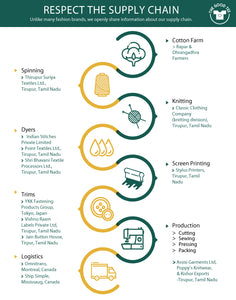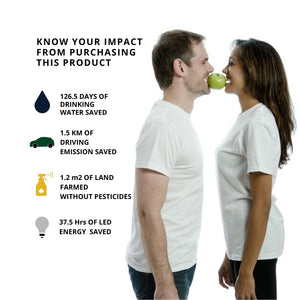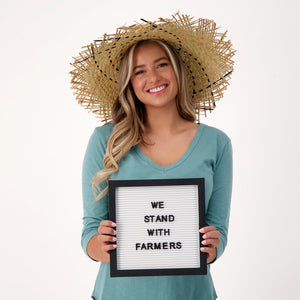How To Evaluate A Fashion Brand For Sustainability

We’ve all heard of companies being more conscious about the environment due to the growing consideration for the environment. However, many big companies use this as a marketing scheme now and claim that their products are sustainable and ethical when they are clearly not. As a consumer, you have to know the difference!
Greenwashing and actual sustainability
Greenwashing is when a company portrays its products/brand to be eco-conscious when they are only doing the tiniest bit of effort to benefit the environment. There are many ways of telling if a company is greenwashing. It may require some research on the company but you’ll be able to spot them in no time.
6 tips to help you evaluate a brand for sustainability
1. Use Good On You to search for brands
Good On You is a website that collated and collected all the information about almost every brand you can think of. With a mission to resolve the problem of pollution, waste and human rights abuse, they believe that rewarding those fashion brands that do well will drive the fashion industry to be more sustainable and ethical in their business practices. The way that Good On You works is that they categorize companies based on their price, how “good” they are in conducting business, and also location.

2. Look for Reputable Certifications
If you didn’t know what certifications to look out for, we’re here to help! If you haven’t heard this enough from us and other brands, B-Corp and Fair Trade certifications are huge ones. It isn’t easy to get this certification, in fact, it took The Good Tee three whole years to get certified! B-Corporation certifies companies that uphold high standards of verified performance, accountability, and transparency to ensure that businesses are able to ethically and sustainably conduct business, without the greenwashing. Fair Trade is another example of a trustworthy organization that ensures farmers and workers are being paid sustainable incomes to pay for their own necessities and families. A few other examples are EWG (100% free of contaminants), Climate Neutral (invests a small percentage into climate change solutions), PETA (vegan/no animal testing), and GOTS (at least 95% organic fibers).

3. Check if eco-friendly materials are used to make the product
When purchasing from the fashion or skincare industry, be aware of what you are putting on yourself. Is it made with organic cotton or polyester? Did they use chemicals or vegan ingredients to formulate their skincare? Is what they use biodegradable or harmful to the environment? Some things to look out for in your clothes are if they’re made of organic cotton, recycled cotton, and organic linen. Natural fibers require less energy to recycle and are more biodegradable than polyester. As for skincare, ensure that they don’t consist of harmful ingredients like synthetic fragrances, parabens, Polyethylene Glycol and Phthalates, all these which are not only harmful to the environment but to your skin. The main thing is to look out for organic and vegan ingredients.

4. Are the products top quality?
A company that prices their clothing extremely cheap definitely does not produce ethically. These companies do not pay their workers ethically which results in their workers not being able to pay for their basic necessities. Another way to tell is if they do regular style releases. This only encourages overconsumption and for consumers to buy what’s “trendy” which is basically why fast fashion increases textile waste in landfills. Not only that, cheap products tend to have a shorter lifespan, whereas quality products last longer and can be passed down for others to wear. Cheap and trendy products are basically the definition of fast fashion. Try shopping for classic instead of trendy and also remember to shop for quality, not quantity
5. Look for transparency
Transparency helps brands be honest about where they’re sourcing their products from. It is often the case that a brand is greenwashing when there is little to no information about where they manufacture their products or they do not find it important enough to state on their website or anywhere online. With transparency, companies pledge to do better by paying their workers ethically, hiring BIPOC, and overall, being aware of where their products come from. Who doesn’t like a little honesty? p.s. Check out our transparency supply chain.

6. Are the shipping and packaging put into consideration?
There are ways to minimize a business's carbon footprint and plastic waste when transporting and delivering their products to their consumers. For example, companies like The Good Tee, that ship their products by sea instead of air, reduce CO2 emissions by 20-30 times. The Good Tee also uses biodegradable and/ or recycled packaging such as Eco-Enclose, which is also better for the environment compared to plastic packaging which takes hundreds of years to decompose. Even our hang tags are made with recycled paper.

Make the choice of what companies to buy from by being considerate of how much CO2 and plastic waste is produced by just delivery and transportation.
With the amount of companies greenwashing, this sadly puts a bad image on other companies that genuinely want to do good. In order to change this, be aware of what you’re buying and who you’re buying from. Try not to support companies that have bad reputations for overproducing or doing more harm than good. We hope that you as a consumer can do your part in saving the planet by shopping at sustainable brands instead of greenwashing brands!
The Good Tee is a B-Corp certified and source from Fair Trade factories. Need we say more? Shop at The Good Tee today!







Leave a comment